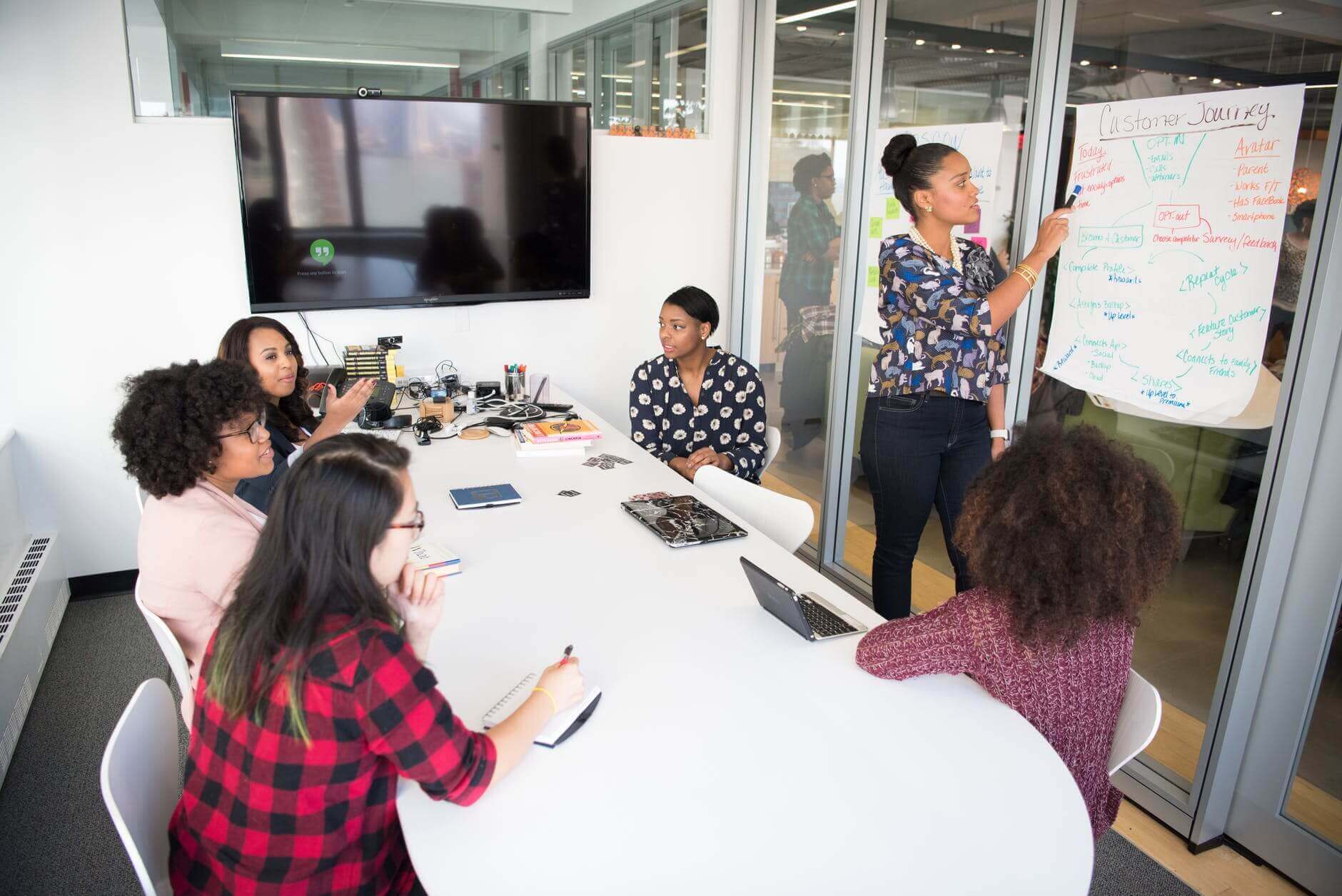October 24, 2019 (Updated March 7th, 2023)
How to make your team meetings actually worthwhile

We all know that meetings have a bad reputation for not being productive – and with good reason. With the average meeting lasting anywhere from 31 – 60 minutes, these can take up a huge chunk of your day – and the last thing you need is to come out feeling like your time has been wasted.
It might then sound contradictory to say that team meetings can have some serious benefits to your team’s productivity – but the key to successful team meetings lies in how you actually conduct them.
On the surface, it can be fairly easy to pinpoint some of the overarching benefits of team meetings, such as:
- Keeping colleagues informed and up to date
Team meetings are a great way to keep everyone informed of project or company updates, and can help to clarify any information which could potentially cause confusion. This allows team members to work together to adjust their priorities where needed and collaborate towards achieving a shared goal.
- Providing open space for feedback and innovation
Team meetings give people the opportunity to provide feedback and showcase their ideas. People can share their suggestions and get an instant response from their colleagues that can help guide their approach to a certain piece of work.
- Promoting a sense of inclusion
Effective team meetings create a collaborative environment amongst your team, making people feel valued and keeping them motivated to work hard together. Strong communication within your team is vital for ensuring everyone is not only on the same page, but feel as though they are a vital piece of the team puzzle.
Strong collaboration strengthens the bonds within your team and keeps colleagues motivated to achieve more together. Being part of a strong, tight-knit team can actually improve our sense of well-being and productivity, whereas a lack of team communication can cause a disconnect between colleagues. This can often lead to frustration and confusion, which can become detrimental to successful productivity.

As important and beneficial as team meetings can be, it’s important to make sure that they are conducted in a way that is truly productive and of benefit to everyone involved. This prevents colleagues feeling frustrated or like their time is being wasted. You don’t want to get to the point where you feel like you’re having meetings for meetings’ sake (trust us, we’ve all been there).
To ensure you don’t reach this stage, read on to discover some of the ways you can get the most out of your next team meeting to make it a true success.
Review your guest list
Make a point of double-checking your guest list. Depending on what objectives you want to achieve in your meeting, you will want to make sure that the number of people in attendance is limited to those who can help you reach these goals. For example, if you want to brainstorm some creative ideas for a new project, you may wish to invite everyone on your team to get a larger range of input. However, if you’re looking to make a team decision on a specific piece of work, limiting your guest list to the key colleagues who can help get decisions underway will stop you from wasting both your own time and that of your colleagues.
Begin with an ice breaker
This might seem unnecessary at first, especially for established teams. But if you’re looking to brainstorm ideas in particular, it can be a really effective way of getting everyone’s heads in the right mindset. Quick ice breaker activities can help to lower your team’s guards and make them feel more relaxed to share their ideas with the group. This can be particularly helpful for the more introverted members of your team. Pick an ice breaker that will take no longer than 5 minutes, so you can jump straight into your meeting actions with full steam.

The power of team brainstorming
Teamwork and collaboration have become a staple and fundamentally vital element of our working lives. A staggering 86% of employees and executives cite lack of collaboration or ineffective communication for workplace failures. Effective teamwork allows you to leverage people’s individual strengths and help you generate new and better ideas. Brainstorming is a widely used technique for creative thinking, and conducted in the right way, can be extremely effective in the problem-solving and decision-making processes.
By bringing people together with different skill sets and experiences, you are more likely to generate more creative and far-reaching ideas than you would just by yourself. Combining your ideas and building on them together will empower your team to achieve your shared goals and help you expand your ideas into something bigger.
Try to avoid ‘groupthink’ during brainstorms
Great strength can be found in team collaboration – however, an effective and creative brainstorm relies on the independent ideas of each individual in the team.
Quite often, some of our best ideas will come to us when we’re switched off and allowing our mind to wander; fairly often, this will be during solo activities such as walking the dog, driving, or even taking a shower. Before holding a team brainstorming session, conduct your own individual brainstorm, and ask your teammates to do the same. This means you can all come to the meeting with your initial ideas already formed, ready to expand on these with the rest of the group.
Groupthink occurs when team members are more concerned about securing the approval of the rest of the group, and as such will hold back on expressing their true opinions and ideas. It can be all too easy for people to agree with other people’s ideas (even if they don’t believe in them) for the sake of maintaining harmony. By asking your team to conduct their own research beforehand, and then asking everyone to share what they came up with, you can help to avoid an atmosphere where people are reserved or holding back their ideas in fear of judgement.

Capture ideas in a Mind Map
The last thing you want is to have a really engaging meeting, only to come out and find some of those golden sparks of inspiration fading from your memory by the time you make it back to your desk. Using a collaboration tool as part of the meeting can truly aid your team’s communication and productivity. Try using a Mind Map as part of your team meeting to capture and expand on ideas that are brought up as you go along. This will not only save you time typing up long-winded notes after the meeting, but also ensures nothing is missed or forgotten.
You can then expand on these ideas directly on the Mind Map after the meeting when you have time to step back from the topic and return to it with fresh eyes. The curved branches of a Mind Map that emulate from your central idea support and stimulate your natural thinking processes, making exploring your ideas as fast-flowing as floodgates opening in your mind.
Mind Mapping is particularly useful for team meetings as they can also be used to engage with remote colleagues, meaning communication is maintained across the board. With a tool like Ayoa, your team can contribute to the Mind Map in real-time, so any colleagues working from home can see ideas flourishing as they happen. Once the meeting is over, you can then export the Mind Map as a PDF which you can send around to the team afterwards as a recap of what was discussed.
Ayoa enables teams to collaborate, generate ideas and turn these into action, all in one dynamic space. Discover more here or get started for free and make your next team meeting your most productive and successful yet.
